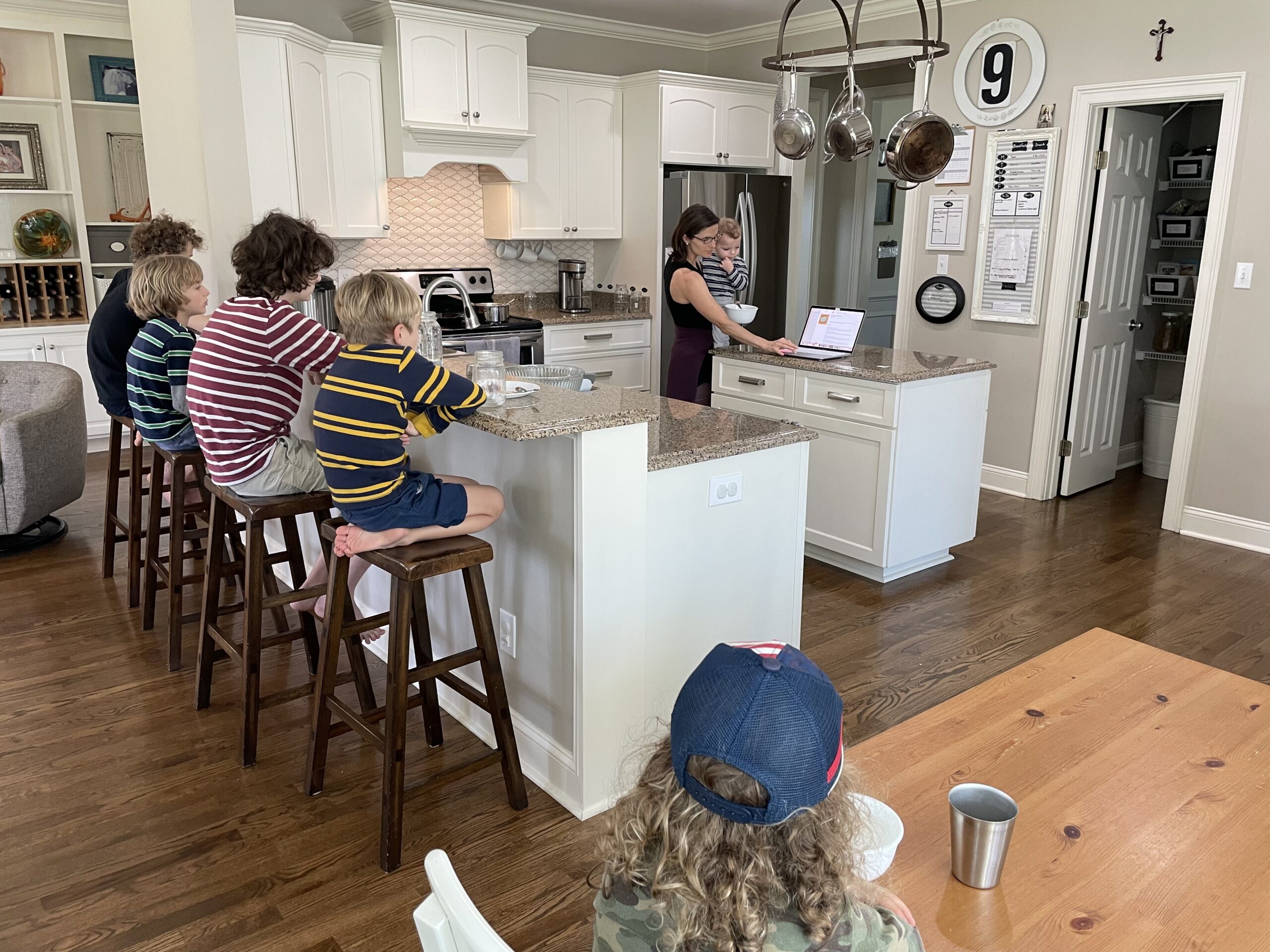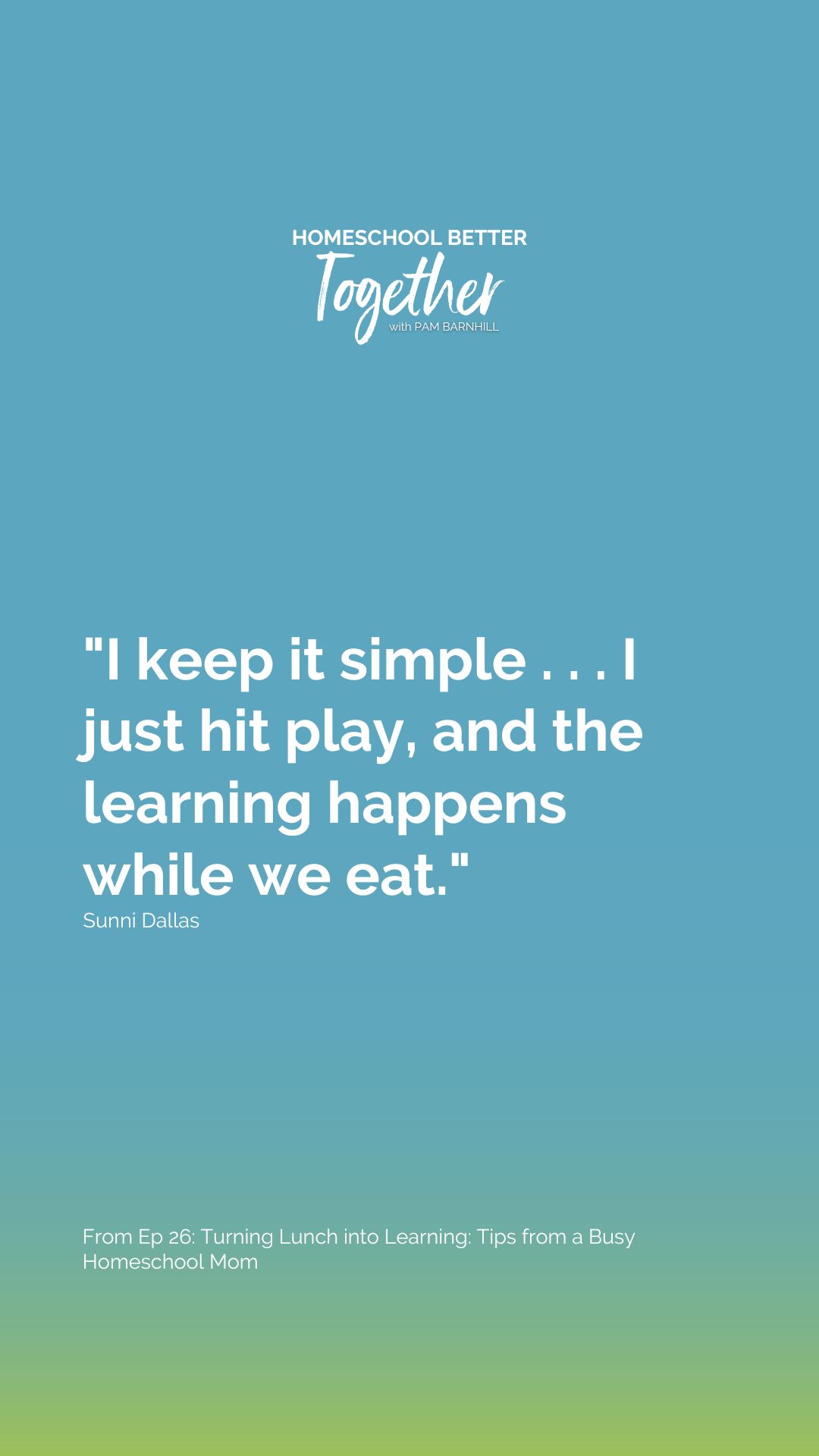
In this episode of Homeschool Better Together, I’m joined by my friend Sunni Dallas, a mom of seven, who shares how she uses the Wonder World Podcast to enrich her homeschool days—especially when life is busy with babies, toddlers, and teens. Sunni talks about how lunchtime has become the perfect anchor for learning, where we provide the content, and she simply hits play. From history to fables, Wonder World is her go-to resource for a mini Morning Time with her kids.
We also chat about other resources Sunni uses to simplify homeschooling and keep her big family engaged without overloading herself with planning. If you’ve ever struggled to keep up with Morning Time or need a fresh way to make learning work with multiple ages, Sunni’s approach will give you ideas and inspiration.
Links and Resources From Today’s Show
- Wonder World Podcast
- Wonder World Kids Club
- The World from A to Z
- Catholic-based content from Ascension Presents
- Brains On
- Classical Conversations
- The Boxcar Children
Key Ideas About Turning Lunch Into Learning
- Using Wonder World at lunch for a “mini Morning Time” when life gets busy.
- Tips for balancing homeschooling with kids of all ages.
- Practical resources and routines that keep homeschooling simple and fun.
- How using pre-prepared resources frees up time and keeps kids engaged.
Bringing Morning Time Back: A Simple Homeschool Solution for Busy Moms
Today’s post is inspired by my friend Sunni, a homeschooling mom of seven with an age range from toddlers to teenagers. If you’re a busy mom juggling different ages, or if you’ve ever thought, How can I make morning time work amid chaos? this is for you. Sunni shared a clever solution that transformed her homeschool—using lunchtime as their “morning time.” Here’s how she makes it work, along with some practical ideas for creating your “lunch and learn” sessions.
Why Lunchtime?
When you’re homeschooling multiple ages, it’s not always easy to gather everyone for morning time. Sunni found that her mornings were filled with schoolwork, chores, and taking care of her little ones. Instead of letting that stop her, she decided to use lunchtime as a dedicated time for learning together. It’s a win-win: the kids are a captive audience while they eat, and she gets to enjoy a relaxed meal too. For busy moms, it’s a great way to fit in learning without interrupting the flow of the day.
Choosing Resources That Work For All Ages
To make lunchtime learning effective, Sunni keeps it simple. Here’s what she uses to engage her kids:
- The Wonder World Podcast: With topics that range from poetry and historical figures to fascinating facts, Wonder World has become their “mini morning time.” While her kids eat, they listen to stories, laugh at jokes, and learn about new topics each week.
- The World from A to Z with Carl Azuz: This current events show for kids gives them a lighthearted, educational way to stay updated on world news.
- Ascension Presents with Fr. Mike Schmitz: As a Catholic family, Sunni incorporates faith-based videos into their lunch routine, giving her kids the opportunity to explore questions about their beliefs.
- Classical Conversations Memory Work: On some days, Sunni plays Classical Conversations songs to help her kids memorize key facts and information in subjects like geography and history.
By looping through a few reliable resources, Sunni keeps lunchtime fresh and interesting. She’s also intentional about pulling up images or extra resources on her laptop for visual interest—like an image of the periodic table if they’re learning about Mendeleev or a famous painting for art appreciation.
Keeping It Organized (Without Overplanning)
Sunni’s approach is flexible but organized. She has a YouTube playlist labeled “lunchtime videos” where she saves any educational clips she wants to share. Then, she simply scrolls through her playlist each day and chooses something that fits the time they have. If Wonder World’s new episode is out, she’ll start with that and add other resources as time allows.
She doesn’t plan out every detail in advance, but she knows her core resources and lets the day’s rhythm guide her choices. This loose structure keeps her from getting overwhelmed while still providing a rich learning experience.

Seeing Real Learning Happen
Sunni’s kids have loved this approach, especially since it gives them freedom to learn about various topics without the pressure of formal lessons. They’ve found connections between topics, revisited favorite subjects, and even shared new knowledge with their mom! Sunni says it’s been fun to watch them make connections between things they’ve heard in Wonder World and concepts they’re learning elsewhere.
Final Thoughts
Lunchtime learning has allowed Sunni to bring back the heart of morning time without sacrificing the flow of her day. If you’re juggling multiple ages or want a simple way to fit in more learning, consider turning mealtime into an opportunity for growth, connection, and discovery.
If you’d like to try this approach, start by gathering a few favorite resources. Podcasts, audiobooks, and educational YouTube videos are great options. And if you’re looking for an all-in-one solution, our Wonder Kids Club offers art studies, picture studies, and more to make your mealtime even richer.
To join our free homeschool community, you can create an account right here.
Leave a Rating or Review
Doing so helps me get the word out about the podcast. iTunes bases their search results on positive ratings, so it really is a blessing — and it’s easy!
- Click on this link to go to the podcast main page.
- Click on Listen on Apple Podcasts under the podcast name.
- Once your iTunes has launched and you are on the podcast page, click on Ratings and Review under the podcast name. There you can leave either or both!

